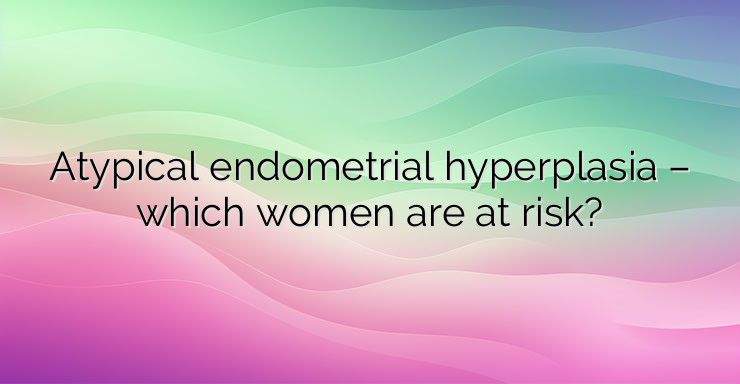Atypical endometrial hyperplasia is a precancerous condition that develops in the lining of the uterus (endometrium). The condition is an overgrowth of abnormal cells. It can also develop from endometrial hyperplasia, which involves an overgrowth of normal cells. Sometimes polyps that grow in the uterus have signs of atypical endometrial hyperplasia. Atypical endometrial hyperplasia is not yet cancer. But if it is not treated, there is a risk of developing into a malignant entity. Endometrial hyperplasia is a precancerous condition in which the lining of the uterus thickens. This can cause unpleasant complaints, including heavy and heavy menstrual periods, postmenopausal bleeding and anemia due to excessive blood loss. Endometrial hyperplasia is most common among women between the ages of 50 and 60. It can also occur in women who are in perimenopause, a transitional state during which women still have periods but at an irregular interval. If left untreated, endometrial hyperplasia can develop into endometrial cancer. There are treatments to effectively manage the condition, which in turn helps to reduce the risk of endometrial hyperplasia progressing to cancer. Causes Endometrial hyperplasia develops when there is an imbalance in the levels of the hormones estrogen and progesterone. There are several reasons why this can happen: Irregular menstrual periods, obesity, or polycystic ovary syndrome can prevent ovulation, which reduces progestin exposure. During perimenopause, when a woman is not ovulating regularly, her exposure to progesterone decreases. After menopause, a woman no longer ovulates, so she is no longer exposed to progesterone. The breast cancer drug tamoxifen mimics the effects of estrogen, without progestin (a synthetic chemical that mimics the effects of progesterone on the body). Some people take estrogen without taking progestin. Tendency to endometrial hyperplasia is observed more after the age of 35, especially in: Early menarche; Absence of pregnancy; They are diagnosed with infertility; Go through menopause at an older age; Suffer from obesity; When taking tamoxifen; Taking estrogen without progesterone. Symptoms The symptoms of endometrial hyperplasia are many and varied. Most women report: Heavier and heavier than normal menstrual cycles; Longer than normal menstrual period; Bleeding between menstrual periods; Menstrual cycles that are shorter than 21 days; Menstrual-type bleeding after menopause; Anemia, in some cases, due to heavy menstrual bleeding. Therapy For women with endometrial hyperplasia who have abnormal, noncancerous cells, progestin therapy may be recommended. This synthetic hormone helps balance the effects of estrogen in the system, which should eliminate or minimize the symptoms of endometrial hyperplasia. to women,who have not yet reached menopause may be prescribed: Birth control pills containing progestin; Birth control pills containing estrogen plus progestin; Progestin injections; Vaginal cream containing progestin; An intrauterine device that gradually releases progestin (levonorgestrel). Women who have reached menopause should not take birth control pills containing estrogen plus progestin. They may be prescribed: Progestin-only birth control pills; Progestin injections; Vaginal cream containing progestin; Intrauterine devices that gradually release progestin. References: 1. American Cancer Society. Endometrial (Uterine) Cancer. 2015: https://www.cancer.org/. 2. Chiang JW. Premalignant Lesions of the Endometrium. 2013: http://emedicine.medscape.com/article/269919-overview#showall. 3. Levine DA, Dizon DS, Yashar CM, Barakat RR, Berchuch A, Markman M, Randall ME. Handbook for Principles and Practice of Gynecologic Oncology.


Leave a Reply